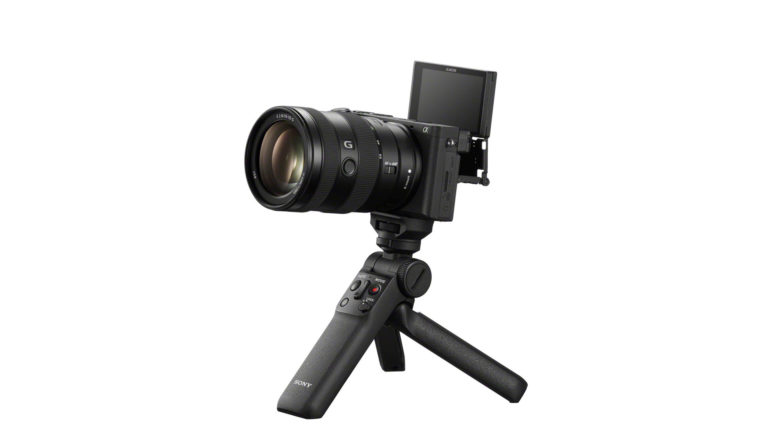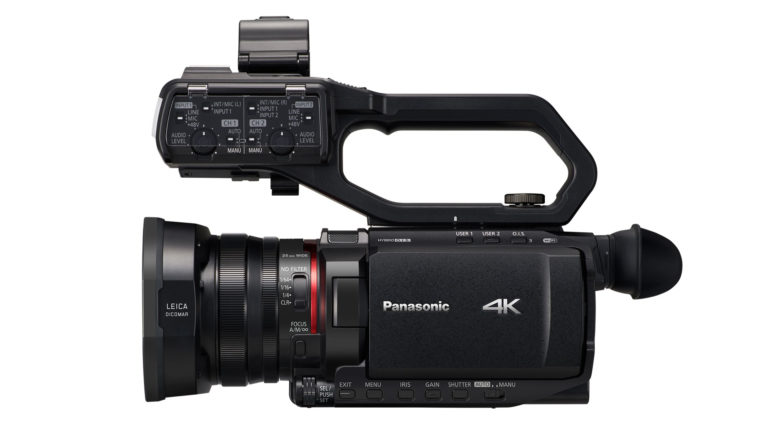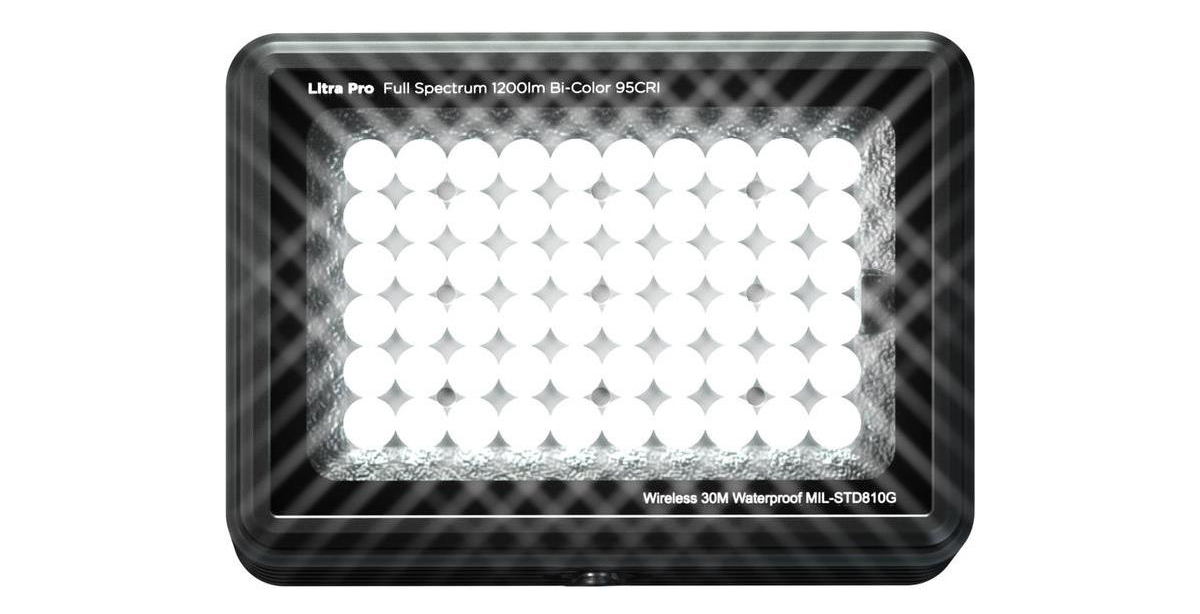At issue is file size versus image quality

Some say that AVC-Intra is twice as efficient as interframe-based MPEG-2 long-GOP (group of pictures) compression, used by Sony in its tape and optical-disc-based cameras to help reduce file sizes while maintaining HD quality. Others say AVC-Intra does this by throwing away half the original picture information during recording, so it's really "half-def" quality.
“If AVC is used with all of its compression tools, such as multi-frame and intra-picture prediction capabilities, then AVC can be twice as efficient as MPEG-2 long-GOP,” said Bob Ott, vice president of optical and network systems at Sony. “But this efficiency has to be qualified by the data rate that the algorithm is working at: sub-megabit per second for SD signals or under 10 Mbps for HD signals, approximately. So yes, AVC long-GOP is about twice as efficient as MPEG-2 long-GOP – but not necessarily at higher data rates.”
He added that when AVC intraframe is used, especially at 50 Mbps and 100 Mbps for HD signals, the algorithm is not more efficient than MPEG-2 long-GOP at lower data rates.
Incompatibility Issues
AVC-Intra should not be confused with the AVCHD format – supported by both Panasonic and Sony – that's designed for consumer HD camcorders and for DVD authoring of Blu-ray disc for feature film releases.
Sony's XDCAM HD recording system, as well as its new XDCAM EX and newest tape-based digital camcorders, are all based on MPEG-2 long-GOP compression, which the company has supported across its entire product line since the introduction of the Z1U HDV camcorder. Sony has said its latest algorithms for compressing MPEG-2 material are more efficient than ever.
AVC-Intra and MPEG-2 are not compatible. Material shot with one format must be transcoded to the other when using a competing system. However, AVC is part of the MPEG specification approved by the ISO MPEG committee. [SMPTE approved a recommended practice for using the AVC/H.264/MPEG-4 part-10 standard at 50 and 100 Mbps with specific constraints (Intra-frame, etc, etc).] Currently, Panasonic's P2 HD products that can record AVC-Intra can also record in DVCPRO-based formats.
Sony says that in order for AVC-Intra 50 Mbps systems to capture images that are equal in image quality to MPEG-2 Long GOP at 25 Mbps, they have to use a much higher data rate. Sony also said that AVC-Intra also requires seven to eight times more CPU power. Thus, using current workstations, someone would have to have four Intel dual-core processors. [Of course, it all depends on whether the algorithm is handling compression or de-compression and whether real-time performance has to be guaranteed.] Panasonic said AVC-Intra requires only about twice the processing power of a long-GOP MPEG system, but is much less complex to process than AVCHD (long-GOP H.264/AVC), although both can be easily edited on today’s NLE platforms.
Comparing The Quality
“AVC-Intra at 50 Mbps doesn't even come close, in terms of picture quality, to MPEG-2 at 50,” said Ott. The company has hosted a number of demos around the country to prove its case.
“I think you have to go up to 140 Mbps to get the same quality as MPEG-2 at 25 Mbps,” Ott said. “From an editing standpoint, AVC-Intra is not laptop-ready. It's going to take several years to get to where MPEG-2 is today.”
According to Ott, AVC-Intra at 70-75 Mbps will match MPEG-2 long-GOP at 25 Mbps (other elements being equal: 1440×1080 and 4:2:0 color structure). For AVC-I to exceed the quality of MPEG-2 long-GOP at 50 Mbps (1920×1080 and 4:2:2 color structure), Ott said, more than 100 Mbps would be needed, especially for demanding picture material and multigeneration work.
Panasonic, which conducted comparison demonstrations earlier this year at several trade conferences and exhibitions, including NAB 2007, said AVC-Intra 50 takes advantage of the new H.264 compression tools to offer high picture quality comparable to DVCPRO HD with double the storage efficiency (64 minutes on one 32GB P2 card). And for 1920 x 1080 24p recordings in AVC-Intra 100, one 32 GB P2 card can hold up to 40 minutes of almost D-5 quality content.
There are laptop editing software packages from Apple, Avid, Grass Valley and others that do support AVC-Intra material, but Ott said the resulting picture quality is lacking. Especially when it goes through multiple concatenations (editing, transmission, etc.), he expects clients will have issues with the quality.
Compressing The Issues
AVC-Intra, like almost all intra-frame professional HD compression schemes used for acquisition and post-production (e.g. in DVCPRO HD, D-5, HDCAM, HDCAM SR etc.) greatly enhances editing ease and image quality as there is zero interaction with content in the adjacent video frames, said Steve Mahrer, director of engineering at Panasonic Broadcast’s Business Development Group. This results in dramatically higher image quality, more deterministic performance and easier implementation in hardware.
“AVC-Intra was designed to give professionals the highest level of image quality,” he said. “The use of low-bit-rate MPEG-2 long-GOP compression for acquisition is limited in that it only provides a certain level of image quality, but is sometimes necessary when you're trying to shoehorn a lot of HD data into a very small bucket.”
Mahrer added that long-GOP H.264/AVC as used in the joint Panasonic/Sony AVCHD camcorder format can provide a 2:1 or greater compression efficiency increase over older, less efficient MPEG-2 compression schemes – thus what MPEG-2 can achieve in terms of video quality at 25 Mbps, AVCHD can achieve at about 12to 15 Mbps or less.
He also said that low-bit-rate long-GoP HD is very difficult to edit; even simple editing or manipulation of the video requires a very complex recalculation of the data stream parameters and subsequent recompression of the content. Such processing leads to severe quality degradation at only a few generations.
Both companies said proper comparisons should be done with certified hardware codecs to see the real-world differences.
“If you have to go HD-SDI to baseband, then baseband back for transmission, even though it is digital, there is a bit of a loss in quality,” Ott said. “We've heard from TV networks who say by the time the signal gets to consumers' homes its gone through five conversions. With today's HDTV sets, you've got to be mindful of what compression you're using. What's that material going to look like?”
For more information, visit
Crafts: Shooting
Sections: Business Technology
Did you enjoy this article? Sign up to receive the StudioDaily Fix eletter containing the latest stories, including news, videos, interviews, reviews and more.








